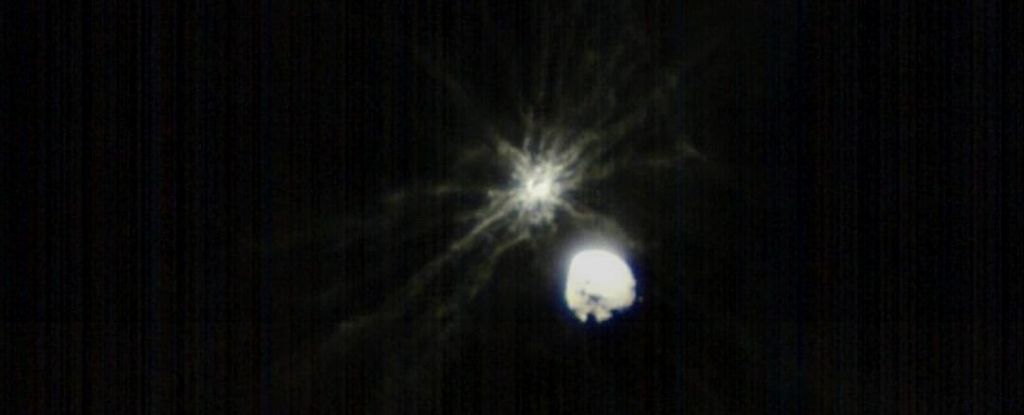A citizen scientist has provided a unique perspective of NASA’s asteroid collision by stabilizing raw images of the event. Using a sequence of stabilized videos, amateur image processor Jacint Roger Perez has given us a new appreciation for the dramatic moment when the DART spacecraft collided with the asteroid Dimorphos.
The DART mission, which stands for Double Asteroid Redirection Test, sought to assess humanity’s capability to deflect asteroids that pose a threat to Earth. The goal was to modify the course of an asteroid using a spacecraft.
#DART Mission#LICIACube – #Luke –
target: #Didymos #DimorphosNASA/ASI/j. Roger pic.com/S8Jqoqv4d7— landru79 (@landru79) November 3, 2023
The target of the DART mission was a pair of asteroids orbiting each other – Didymos, the larger one, and Dimorphos, the smaller one. The impact was meant to change the course of Dimorphos and it succeeded in doing so, altering the orbital period.
In September 2022, the DART spacecraft collided with Dimorphos, resulting in a spectacular event with ejecta erupting from the asteroid’s surface.
El impacto#DART Mission#LICIACube #Leia
target: #Didymos #DimorphosNASA/ASI/j. Roger pic.com/5DhATiE6KQ pic.com/YBBsmkQVMQ — landru79 (@landru79) November 5, 2023
The impact was observed by the Italian Space Agency’s LICIAcube, which captured the event from a distance using two cameras, providing valuable data to scientists.
The raw LICIAcube images, recently released to the public, were processed and compiled into multiple videos by Perez, shedding light on the unexpected outcomes of the collision.
These videos reveal the significant eruption of material from Dimorphos, far exceeding scientists’ expectations. The resulting tail stretched for over 10,000 kilometers (6,214 miles) for months after the impact, releasing over a million kilograms of material from the asteroid.
El impacto#DART Mission#LICIACube #Leia + #luke
target: #Didymos #DimorphosNASA/ASI/j. Roger pic.com/ohOA6UiEWx— landru79 (@landru79) November 5, 2023
Surprisingly, the asteroid’s orbit was altered more significantly than anticipated, mostly due to the material eruption rather than the impact itself. The momentum from the escaping dust caused a reduction in the orbital period, challenging scientists’ initial assumptions.
These results highlight the need to consider an asteroid’s composition when planning deflection missions. Loose and rubbly rocks might be diverted more effectively than those with a more compact structure.
Interested readers can visit Johns Hopkins University’s website to review the DART mission and its results. Raw LICIAcube images are also available for download here. Additionally, those on X can follow Perez and check out his videos from the DART mission.


